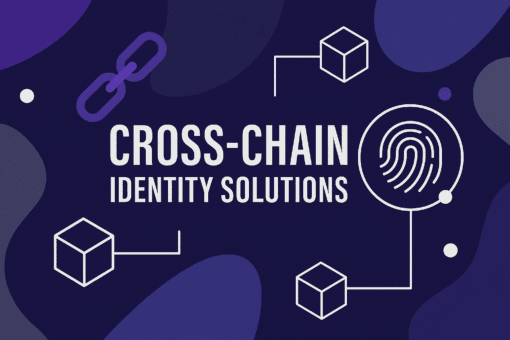As Web3 expands across dozens of blockchains, one challenge remains consistent: Identity. Today, users must manage multiple wallets, duplicate KYC processes, and struggle to build reputation across networks. That is why cross-chain identity solutions are becoming increasingly important.
These tools aim to create a consistent identity layer that functions across blockchain ecosystems. They provide a way for users to prove ownership, reputation, and credentials regardless of which chain they are using. In doing so, they improve usability, trust, and accessibility throughout the decentralised world.
In this article, we explore what cross-chain identity solutions are, why they are necessary, and which projects are leading the charge toward a unified Web3 identity standard.
The Problem With Fragmented Identities
To begin with, identity on blockchains is typically represented by a wallet address. However, wallet addresses are chain-specific, and many users interact with several blockchains simultaneously. As a result, identity becomes fragmented.
Without a way to link these addresses securely, users must repeat verification steps, developers struggle to assess reputation, and applications cannot personalise experiences effectively.
Furthermore, on-chain activity such as voting, lending, or content creation often cannot be tied together across networks. This limits the potential of decentralised social networks, DAOs, and reputation-based lending.
What Cross-Chain Identity Aims to Solve
Cross-chain identity solutions address these issues by allowing users to:
- Link multiple wallets across blockchains to a single identity
- Carry reputation data and verifiable credentials between networks
- Reuse KYC or compliance checks when interacting with new protocols
- Enable dApps to personalise services and manage access based on shared identity data
In essence, they create an interoperable identity layer — similar to using a single login across different websites — but designed for the decentralised web.
Leading Cross-Chain Identity Projects

Several projects are pioneering in this space, each with a unique approach:
1. Ceramic and IDX
Ceramic is a decentralised data network, and IDX (Identity Index) is its identity protocol. Together, they allow users to link multiple blockchain accounts and store off-chain identity data in a decentralised way.
Because Ceramic supports interoperability, the identity data can be referenced by applications on Ethereum, Solana, and beyond.
2. Lit Protocol
Lit provides a programmable access control layer that allows developers to create identities based on wallet signatures from multiple chains. It supports encryption, data access, and login logic tied to cross-chain activity.
This makes it suitable for Web3 content, DAOs, and apps that need fine-grained user permissions.
3. Spruce ID
Spruce is building decentralised identity tools with a focus on user control and cross-platform compatibility. It works with Ethereum and EVM chains to support sign-in and verification standards using open identity protocols.
As it evolves, Spruce aims to support DID and verifiable credentials across multiple ecosystems.
4. BrightID
BrightID takes a social trust-based approach to identity. Users prove uniqueness through a web of connections, which can be ported across chains. While not strictly cross-chain in origin, its integration with multiple applications and networks supports identity portability.
5. Quadrata
Emerging from the DeFi sector, Quadrata enables the use of compliance credentials, such as KYC or AML verification, across dApps and chains. This supports privacy-preserving identity while meeting regulatory needs.
It represents a step toward bridging the gap between on-chain activity and off-chain compliance.
Benefits of Cross-Chain Identity

When implemented correctly, cross-chain identity systems offer several key benefits:
- Simplified user onboarding: No need to create and verify separate accounts for every chain
- Reputation portability: Users can carry trust scores, voting history, or credentials across ecosystems
- Improved compliance: Verification and access control can be reused securely
- Enhanced UX: Developers can personalise services and reduce unnecessary friction
Together, these improvements make Web3 more accessible to everyday users and more powerful for developers.
Challenges Ahead
Despite the progress, several hurdles remain:
- Privacy concerns: Managing identity across chains must not compromise user privacy
- Standardisation: Different protocols use different formats and assumptions
- Adoption: Cross-chain identity needs critical mass to be truly useful
- Security: Linking identities across chains must be done without introducing new attack surfaces
Nevertheless, these are solvable problems, especially as interest in identity solutions continues to grow.
Cross-chain identity solutions are paving the way for a seamless, user-centric Web3. By allowing users to maintain one trusted identity across multiple networks, they reduce friction and open new possibilities for composable, personalised blockchain applications.

